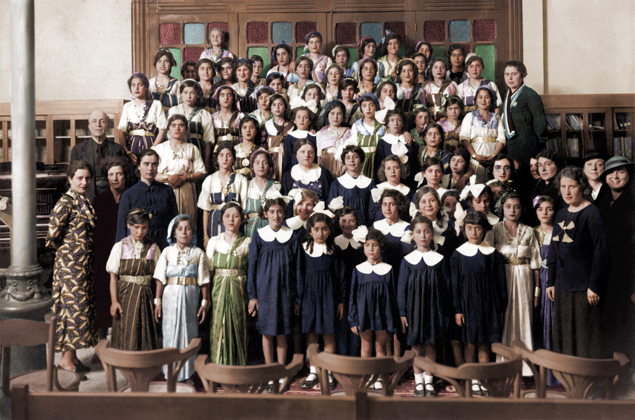
Schools in Libya became very clear during the colonial period. The Italian government ran many schools where many Libyan Jews attended. According to information shared on book titled ”Jewish Life in Muslim Libya” by Harvey E. Goldberg, almost all Jewish males had elementary schooling. One of the most famous schools is Pietro Verri elementary school in Tripoli. It was the Italian school for boys. Giannetto Paggi founded the school in 1876. It provided Libyan Jews the skills required to obtain a tangible profession especially in business. Close from Mahmoud’s mosque. Two years later, the school followed by a girls’ school.

Libyan Jews were mainly located in Hara Kebira and Hara saghira (big and small quarters) in the old city of Tripoli. Several European consulates were located in the northeast part of the formerly mentioned quarters. In fact, it is where many of Christian residents lived. Many Jewish students studied in other schools outside the walls of the old city to the west. In addition, Muslims and Italians attended as well. Girls and boys studied together in same classes in other schools like Scoula Roma in Mezran Street in Tripoli. However, they were separated in Pietro Verri. Some young Jewish males went to traditional synagogues in order to get a basic religious education. Yet. they attended religious schools at the age of three and four. Before attending the Italian school at the age of seven.
Pietro Verri School Founder

The founder of Pietro Verri, Giannetto Paggi, came to Tripoli in 1876; as an employee of the Italian Ministry of Education. A group of Jewish families invited and financed his stay in Tripoli. “Padri di famiglia” who wanted a modern, Italian-language elementary school for their sons. When he decided to open Pietro Verri, the question arose within the community of how to provide a more modern education. Especially that the education provided by mainly by Hara [Jewish quarter] was traditional Jewish education, or Muslim schools. Thus, he undertook to set up an Italian-language school at his own expense.
He was one of the first Italian Jews, and the first Jew from Pitigliano to become a public employee. The number of students was very low but grew gradually. Within the first two years, the number of male students was 27 young boys. Until by 1883, the number of students grew to 90. In 1882, the Italian colonial powers took over the institution and it became an Italian state educational institution run by the Ministry of Foreign Affairs.
Complicating The Sphere by Colonial Powers
When the Italian colonization extended further in the country; many Jewish students attended the Italian school in the morning and received religious studies in the afternoon. During the 1930s, studying in post-elementary schools became problematic for Jewish students. The Italian authorities that all Jewish students attend the schools in the Shabbat. It is Judaism’s day of rest on the seventh day of the week— Saturday.
Paggi’s work with the Ministry of Education extended further. Accordingly entrusted with the task of founding a technical school of draftsmen and accountants, of which he became director. Furthermore, his influence in Tripoli was profound in many ways.

Paggi appointed president of the local section of the Dante Alighieri Society. A cultural institution founded in 1889 with the aim of preserving and spreading the Italian language and culture in the world. The government honoured him with the title of Cavaliere d’Italia. Also, honoured with a gold medal from the City of Tripoli in May 1916, at the age of 64. Top civilian and military personalities attended his funeral in 1916. The Tripoli newspaper, Nuova Italia, dedicated an entire page to his funeral.
For further information, sources of information are included in hyperlinks.









